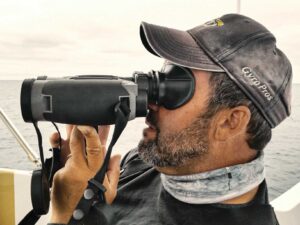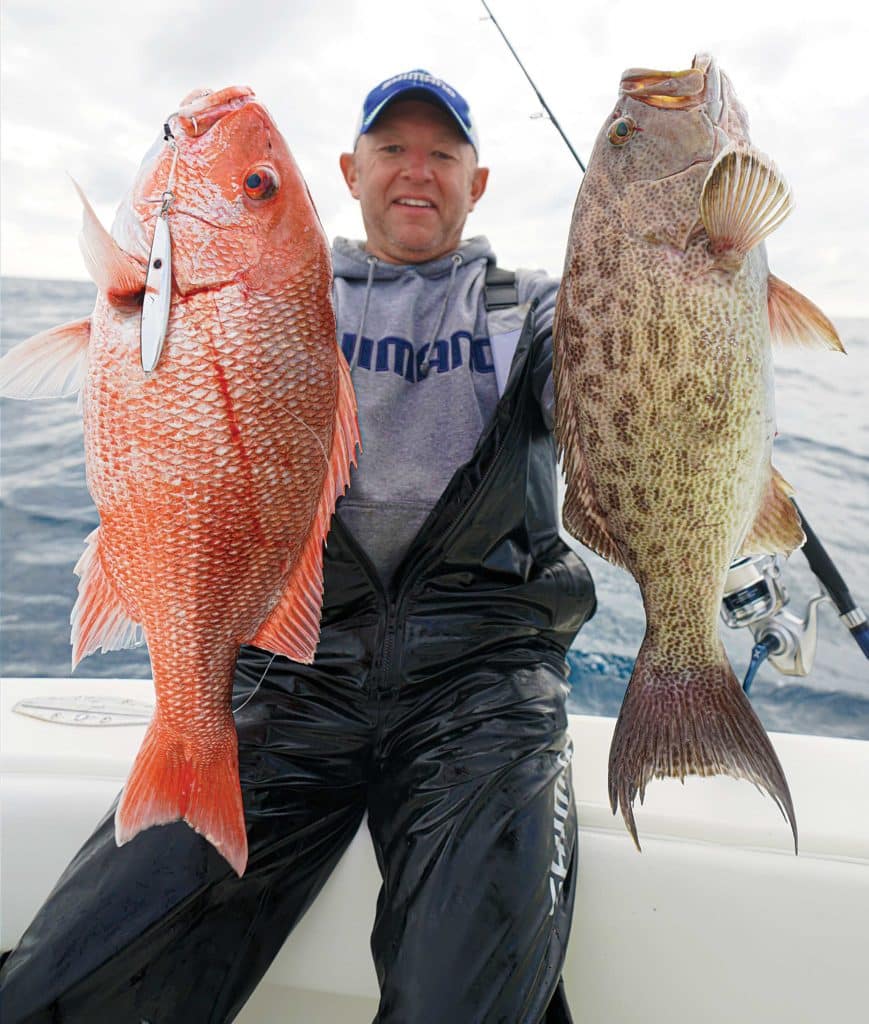
In modern fishing rod design, there is no one size that fits all. The variety of tasks rods are called on to perform, many as particular as the type of lure or bait used, demand performance tailored to specific purposes. Designers answer that need with materials, rod tapers and resulting actions to best accomplish the task at hand.
To achieve variations in action and power, the rod builder adds or subtracts material along the length of the rod when building the blank. To further tailor rod action, explains Jason Brunner, director of engineering at St. Croix, the taper of the mandrel around which the rod blank is formed distributes more or less material to specific parts of the rod. “This process allows us to deviate from the straight line transitions in rod flex,” Brunner says. Both the recovery speed of the rod blank and the portions of the rod that come into play during the casting, fishing and fighting are determined by the amount of material used and its distribution along the length of the rod. Slight variations in the thickness of the tube wall allow builders to craft a rod matched not only to the tactic, but also the weight of the lure or bait.
Light Tackle
When finesse, topwater or twitchbait fishing, anglers look for purpose-built rods for each tactic. Brunner explains: “A topwater rod needs to work a lure with short, quick movements in a consistent rhythm. I use a stiff, extra-fast rod for topwater lures because the tip only deflects in the first 12 inches.”
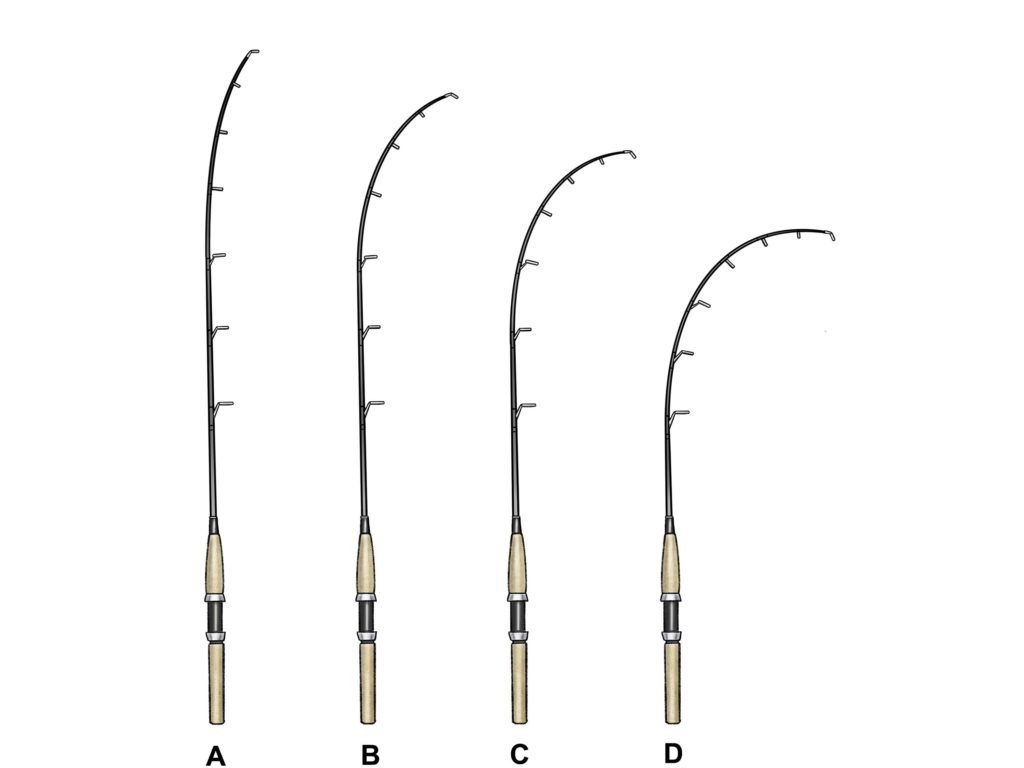
This action offers a precise and predictable response to the angler’s technique, and translates into instant control of the lure on the surface.
On the other hand, jerkbaits demand an erratic twitch-twitch-pause. To create this spastic twitching with a jerkbait, Brunner looks for a rod that flexes a little deeper into the blank.
Trolling and Bottomfishing
Whether you’re trolling for striped bass, slinging bait for red drum, live-baiting offshore, or pulling snapper or grouper from a wreck, the old-reliable boat rod gets the job done. But there’s nothing old about the latest generation of this workhorse. Cameron Kaihara, rod-development manager at Penn, says modern materials and construction make inshore trolling and bottomfishing rods lighter and tougher than traditional designs.
The ultimate boat rod is 6 1/2 or 7 feet. A longer rod is easier to work around the boat, while a shorter rod offers more lifting power. The best boat rods bend well into the middle of the blank for greater shock absorption. But the blank still needs enough reserve power to control a fish and allow an effective application of force.
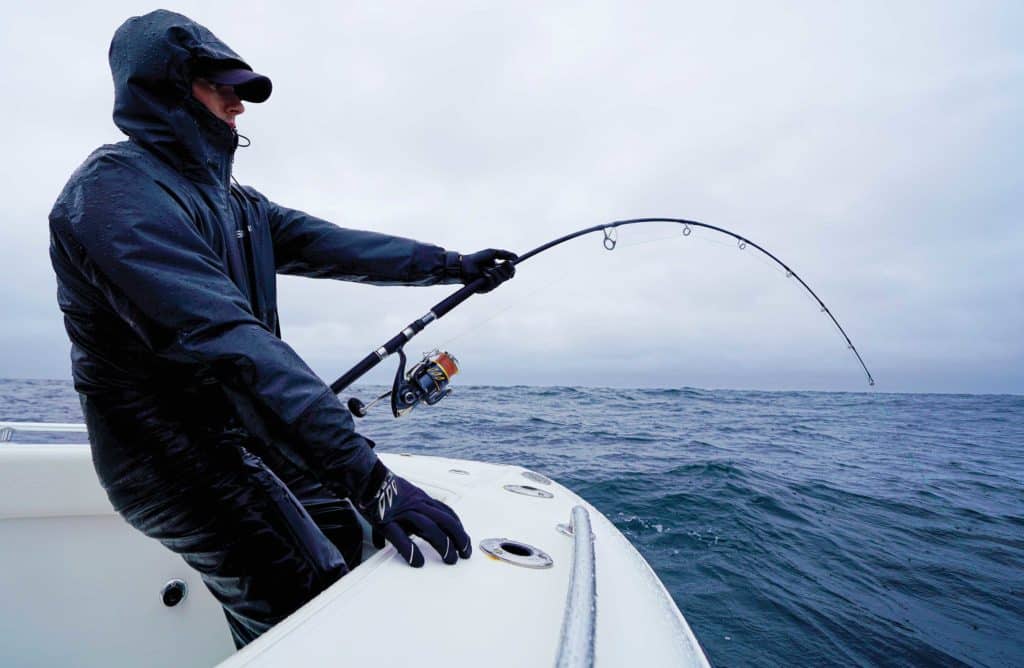
For the best of both worlds, Kaihara combines carbon fiber and fiberglass. “Nothing is stronger than fiberglass, while carbon provides a crisp action,” he says. By combining layers of material at 45-degree angles in the blank, designers take advantage of both characteristics in the same rod.
The toughest rods feature an aluminum gimbal and aluminum reel seat, and guides with inserts to resist wear from braided line. Most of all, a boat rod must be sturdy and reliable. “Nothing messes up a day on the water faster than a broken rod,” Kaihara says.
Jigging
Vertical and slow-jig anglers demand light rods that handle heavy fish, but the proper action is also essential.
Tristin Poole, saltwater specialist at Shimano, says: “We design rods more to work a jig than to fight the fish.”
Trends in jigging rods demand an ultralight rod with action tuned to match the size and style of a vertical jig. For Poole, the ultimate jigging rod is 6 to 6½ feet and pencil-thin. Slow-pitch jigging calls for a slightly longer rod to give the jig a more erratic action.
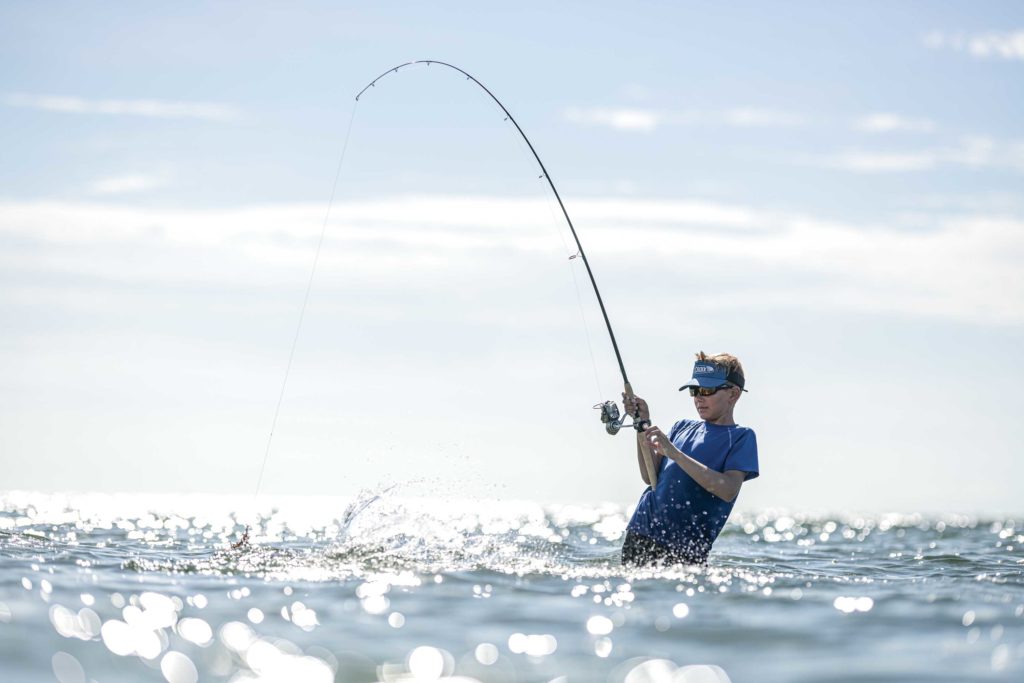
Anglers need to feel each lift and drop of a jig. To this end, Poole recommends a moderate-fast to fast-action tip with enough snap to work the jig.
Vertical jigging, with a cadenced retrieve, requires a faster tip. Slow jigging, with the lure spiraling in a wide arc, works best with a slower-action rod.
The best jigging rods have parabolic action, bending through the middle of the rod, to help the rod load properly while working the jig, and prevent hooks from straightening during the fight.
Headboat Specialty
West Coast sportboat anglers demand a lot out of their rods. Fishing shoulder-to-shoulder with a couple dozen other anglers, the bait that goes the farthest often gets the bite. Then fighting a tuna or yellowtail through a crowd requires a rod with smooth bend, fast recovery, and plenty of backbone for control.
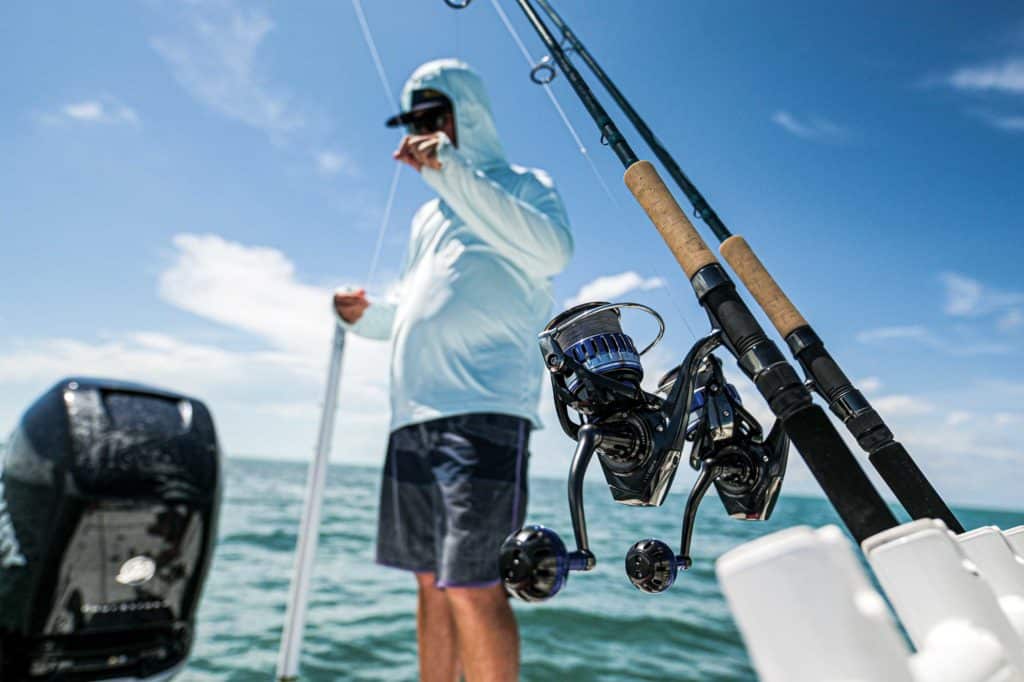
Marc Mills, field marketing manager at Daiwa, grew up working Southern California sportboats, so he knows the demands of catching big fish from a stationary boat.
For live bait, Mills recommends a 7½-foot conventional rod. “Only 20 percent of the tip should bend before true power is tapped into,” he explains. This allows the rod to flick a bait the required distance, and have enough power to set a small hook with light line.
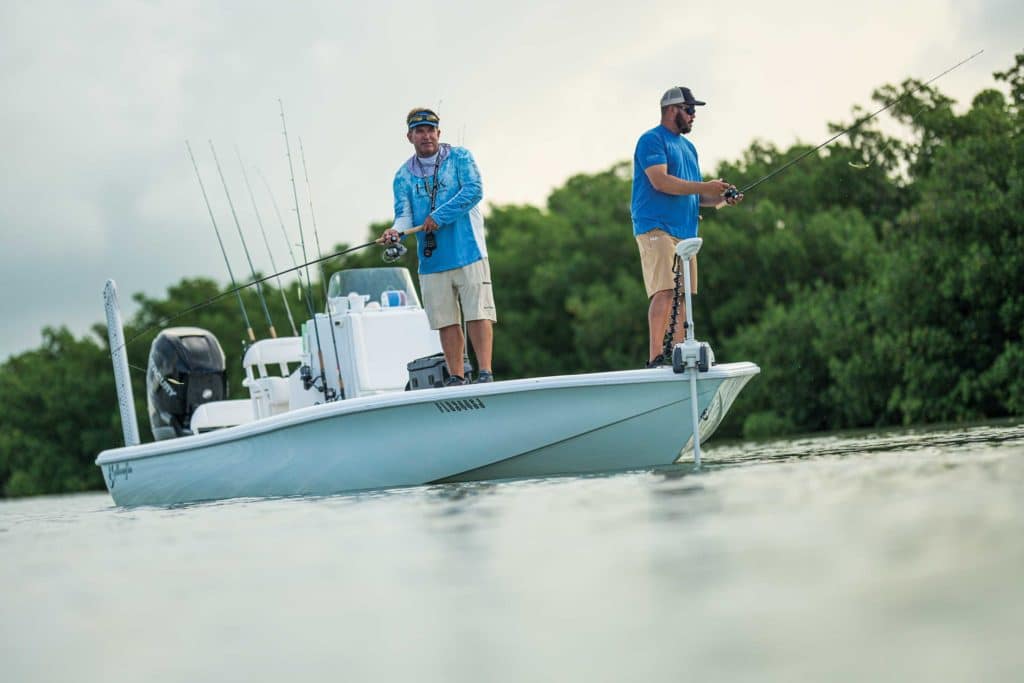
When throwing a metal jig, sportboat anglers like 9-foot, fast to medium-fast rods. Mills says a medium-fast rod loads well to cast, with enough backbone for a hard strike. A slower tip also allows the angler to apply drag pressure without pulling the hook.
The latest generation of West Coast rods is a response to reel technology. “We are turning 6-to-1 gear ratios with incredible torque,” Mills says. Faster reels with more power require rods that won’t fold under the pressure.
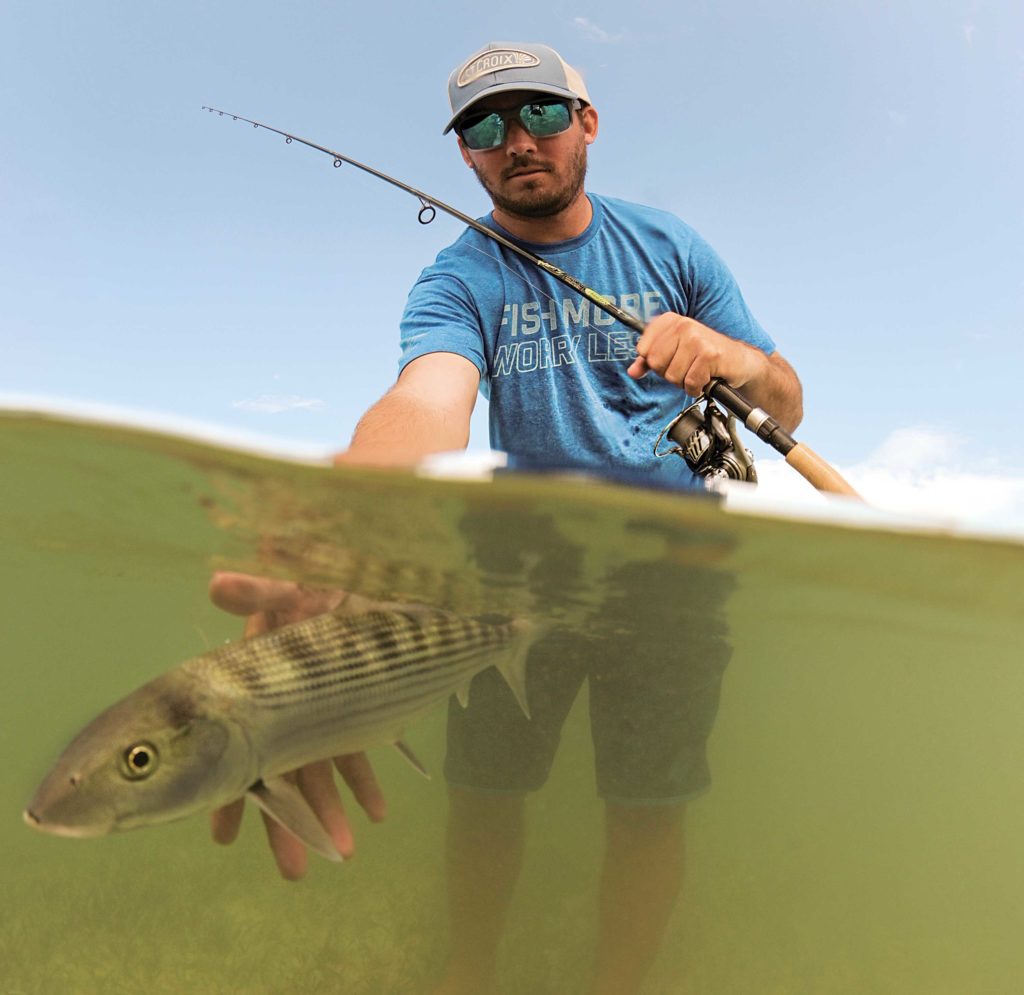
That’s the case at Accurate Reels, where the company’s compact, powerful reels motivated it to go into the rod business. Justin Poe, vice president at Accurate, explains: “Our customers asked for a rod to match our reels.”
With one of the lightest reels on the water, Poe’s focus was creating one of the lightest rods. “We cut every ounce possible,” he says. The designers removed trim, and removed threads on the reel seat. The weight savings pay off after a long day of working a bait.
Bluewater-Honed
Trolling rods are traditionally the territory of E-glass, the strongest and heaviest material, but John Bretza, product specialist at Okuma, explains that stand-up and rail fishing inspired anglers to look for light, strong rods. Adding carbon fiber to the blank helps it recoil faster. A medium-action rod bends deeply to absorb shock, but carbon fiber allows it to recover faster. Pre-impregnated fiberglass combined with carbon-fiber fabric during construction helps tune rod response. Bretza says: “The fast recovery helps retrieve more line with each pump of the rod. Experience pays in combining materials without creating a soft spot. For reliability, look for a rod that bends evenly.”
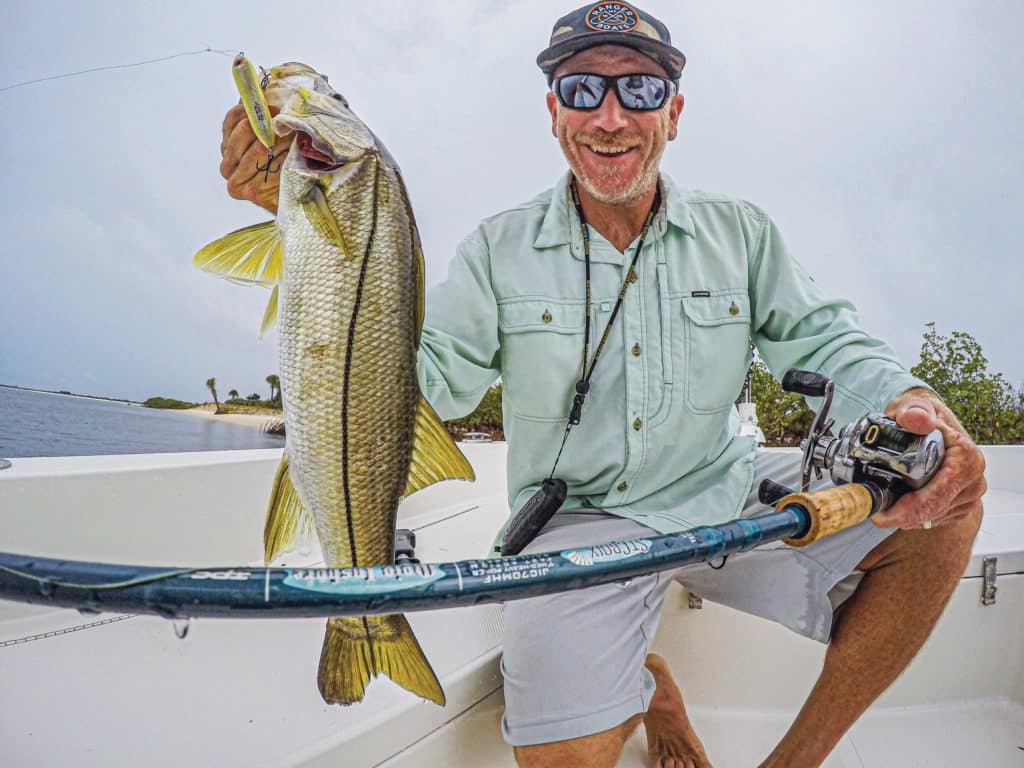
Components have to be as tough as the blank. Offshore rods use an aluminum reel seat and butt. “The latest rods use a carbon-fiber butt, which is lighter than aluminum, and stiff enough to not get stuck in the rod holder,” Bretza says. These advancements create a lighter rod capable of doing heavy work with the least effort, for the most fun.
Read Next: Small Powerful Reels Handle Big Fish
With the latest technology and materials, anglers can get a rod designed for trolling lures or rigged baits; casting a 1/8-ounce jig or a 3/8-ounce jig, live bait or heavy lures; and vertical jigging or slow pitching. Add in components and tailored design and construction, and there is a perfect fishing rod for every tactic and every angler.


